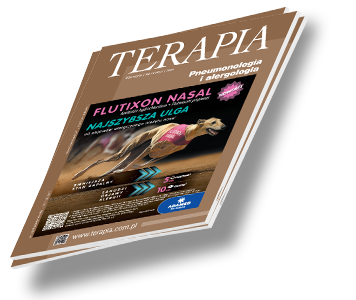W gabinecie lekarza rodzinnego Terapia 2020, 6 ( 389 ) : 50 - 59
Ostra biegunka infekcyjna u dzieci
Acute infectious diarrhea in children
Ostra biegunka jest częstą chorobą, która dotyka zarówno dzieci, jak i dorosłych. Jej przebieg może być ciężki. Szacuje się, że ostra biegunka stanowi ósmą przyczynę zgonów na świecie niezależnie od grupy wiekowej oraz piątą dzieci do 5. r.ż. (446 000 zgonów/rok) (1). W Europie na jedno dziecko poniżej 3. r.ż. przypada do 2 epizodów ostrego nieżytu żołądkowo-jelitowego rocznie (2). Mimo że w krajach europejskich odsetek zgonów z powodu ostrej biegunki jest niewielki (ok. 300 dzieci/rocznie) (1), jest ona najczęstszą przyczyną hospitalizacji w tej grupie wiekowej (2). Prawidłowe postępowanie w ostrej biegunce pozostaje więc aktualnym problemem.

Zaloguj się i przeczytaj bezpłatnie całą treść artykułu.
Nie masz jeszcze konta dostępowego?
Zarejestruj się bezpłatnie, a otrzymasz:
* dostęp do wszystkich doniesień oraz pełnych tekstów artykułów naukowych w naszej Czytelni,
* prawo do bezpłatnego otrzymywania newslettera "Aktualności TERAPIA" z przeglądem interesujących i przydatnych wiadomości ze świata medycyny oraz systemu ochrony zdrowia w Polsce i na świecie,
* możliwość komentowania bieżących wydarzeń oraz udziału w ciekawych quizach i konkursach.
Zapraszamy serdecznie, dołącz do naszej społeczności.



Dodaj komentarz